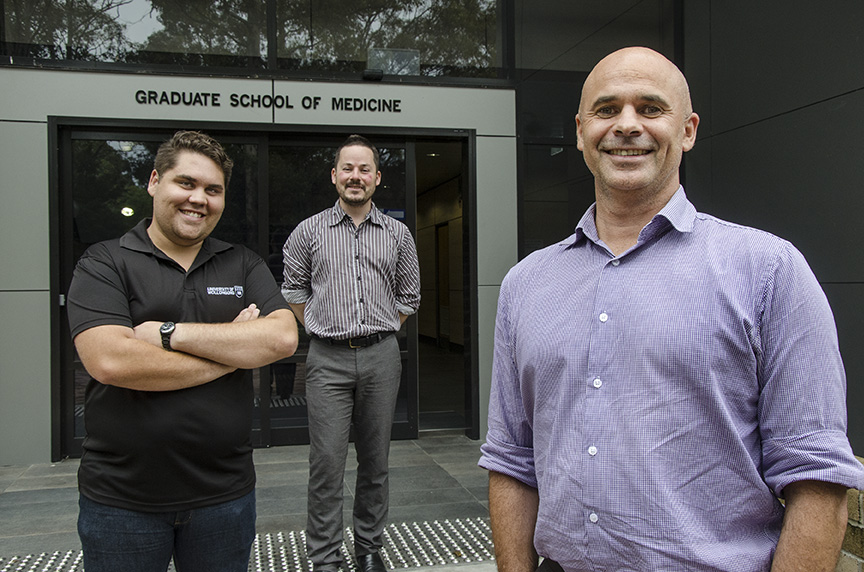April 15, 2014
Indigenous students pave the way for the future of medicine
A record number of Indigenous students are taking up medical studies this year at the Graduate School of Medicine.
When Timothy Haynes graduates from UOW’s Graduate School of Medicine he’ll be keeping alive a proud family tradition of helping his community and people.
Mr Haynes is among a record number of Indigenous students taking up medical studies at the Graduate School of Medicine this year as part of new recruitment strategies to help address the shortage of Indigenous students in medical programs within Australia.
“That’s always been the drive, to go back and try to make a difference in Indigenous health,” Mr Haynes said. “When you look at the proportion of Indigenous people to the population and then compare that the ratio of Indigenous doctors in the medical profession we see that we’re not achieving parity.”
Mr Haynes is a Gamilaroi man, whose traditional lands cover a huge swathe of west and northwest New South Wales.
His journey from the small town of Baradine in north-western New South Wales to graduation in four years as a doctor is inspired, in part, by his great-great-grandmother Mary Jane Cain who instilled in the family the drive to help the community when she petitioned Queen Victoria to have land at the Burra Bee Dee Mission granted to the community.
It was subsequently gazetted in 1911 as an Aboriginal reserve, a major event in New South Wales land rights history.
“My mother and my aunties, they encouraged me to pursue medicine and I’ve always wanted to give back to my community,” he said. “I still have a lot family up there and as an Indigenous person you have a strong attachment to the land where you come from and you also have that knowledge of Indigenous cultural issues and just how to relate and approach the people.”
Academic Leader of Indigenous Health at UOW’s Graduate School of Medicine Scott Winch said the increase in Indigenous student enrolments, including five new students this year, was largely due to changes in the admissions process, which now evaluated Indigenous applicants not only on their academic merit, but also on their capacity to be future health practitioners as well as role models in the Indigenous community.
“In 2009, approximately 0.2 per cent of all Australian medical practitioners were Indigenous despite being approximately 2.6 per cent of the total population,” he said.
“It is therefore extremely important to increase the number of Indigenous medical practitioners to improve access and health care through culturally relevant means and to also increase the social capital within the Indigenous community.
“Within the 4 year medical program, all students have the opportunity to undertake both short term experiences and full year clinical placements in Aboriginal Community Controlled Health Organisations throughout NSW and further abroad.
“This provides them with the opportunity to develop culturally appropriate clinical practice along with a deeper understanding of and commitment to Indigenous Health.”
Acting Executive Dean of the Faculty of Science, Medicine and Health, Professor Alison Jones, said: “There is nothing more important than us working together to improve the health and wellbeing of our Indigenous communities. There has never been a more important time than now.”
